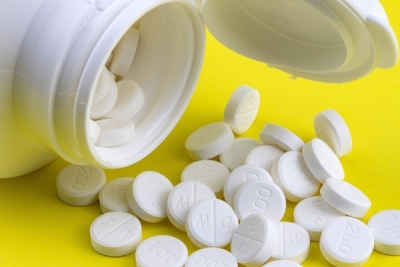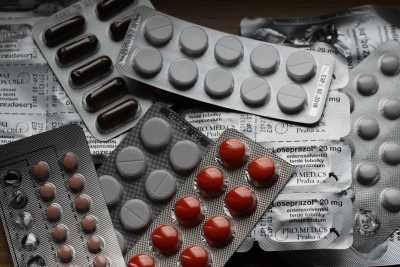Are There Medications for the Treatment of Alcoholism?
Are There Medications for the Treatment of Alcoholism?
In addition to psychosocial interventions, there are medications that also play an important role in reducing alcohol consumption and managing alcohol dependence. Below, learn about the main pharmacological options available—their functions, effectiveness, and the challenges of access in Brazil.
The Role of Medication in Treating Alcohol Use
Harmful alcohol use affects over 2 billion people and is responsible for nearly 6% of all deaths worldwide.¹ Similar to other chronic multifactorial diseases, the pathophysiology of alcoholism is approximately 50% genetic and 50% due to environmental factors.¹ Despite these alarming statistics, it’s important to highlight that alcoholism is both preventable and treatable.
Besides psychosocial interventions—such as individual and group psychotherapy—that play an extremely important role in treating alcohol dependence, there are medications that can assist in this process. These drugs help regulate the brain chemicals responsible for increasing the urge to drink, and they can also reduce anxiety or alleviate withdrawal symptoms when someone stops drinking, such as tremors, weakness, or hallucinations.
Pharmacological Treatment for Alcoholism
Currently, treatment is based on three main medications: disulfiram, naltrexone, and acamprosate, which are approved by the U.S. Food and Drug Administration (FDA).³ A recent review study demonstrated the efficacy of pharmacological treatment, even when compared to the significant effects of placebos.² The main drugs evaluated in the study were acamprosate, disulfiram, nalmefene, naltrexone (oral and injectable), baclofen, gabapentin, topiramate, and varenicline. The study showed that these medications—approved or recommended by international guidelines—help reduce both the frequency and intensity of alcohol use, as well as cravings. Although the effects are modest, the findings reinforce that their use can offer significant benefits, especially when combined with psychosocial support.
Disulfiram
Disulfiram⁴⁵ was one of the first medications approved by the FDA for the treatment of alcoholism. It inhibits the enzymes that break down alcohol into acetaldehyde. Inhibiting the enzyme acetaldehyde dehydrogenase leads to a buildup of acetaldehyde in the body, resulting in the disulfiram–ethanol reaction, characterized by severe nausea, vomiting, or even seizures. In other words, the medication is intended to create an aversive response to alcohol by producing unpleasant physical effects when alcohol is consumed shortly after taking the drug.⁵
Despite its proven efficacy and long history of use, disulfiram is currently not being marketed in Brazil, which limits its availability as a treatment option.
Naltrexone
Naltrexone⁴⁵ is used as an adjunct to psychosocial interventions in treating alcoholism. It works pharmacologically as an opioid receptor antagonist, reducing the pleasurable effects of alcohol, the desire to drink, and the feelings of euphoria associated with alcohol use. Alcohol indirectly stimulates the activity of endogenous opioids by promoting the release of peptides such as enkephalins and beta-endorphins. These peptides enhance dopamine activity in a brain region called the nucleus accumbens, mediating the rewarding effects of alcohol.
Another mechanism of naltrexone involves the inhibitory action of these endogenous peptides on GABAergic interneurons in the ventral tegmental area. These interneurons normally inhibit dopamine neurons. Therefore, opioid antagonists like naltrexone reduce alcohol consumption by blocking these receptors and interrupting the mesolimbic dopamine pathway.
Some studies suggest two types of drinkers may respond differently to treatment: “relief drinkers” and “reward drinkers.”⁶ Relief drinkers consume alcohol to relieve negative emotional states like anxiety, whereas reward drinkers are driven by alcohol’s pleasurable effects and have a strong craving for it.
Research has shown that reward drinkers tend to respond better to naltrexone.⁶ For example, in young adults, one study found that patients with high levels of both reward and relief motivation responded better to naltrexone treatment compared to placebo.⁷⁸
Note: Naltrexone is available in oral formulations in Brazil. The long-acting injectable form, which is common in some countries, is not commercially available in Brazil at this time, limiting its use in certain cases.
Acamprosate
Acamprosate⁴⁵ has also proven effective in treating alcohol dependence. It inhibits the brain’s excitatory glutamate activity, particularly by acting on NMDA receptors when these receptors become hyperactive. Acamprosate is considered a partial co-agonist of the NMDA receptor. Animal studies have shown that this medication reduces glutamate-induced calcium reuptake in neurons, suppresses conditioned responses to alcohol, reduces withdrawal effects, and inhibits glutamate-induced brain hyperexcitability and c-fos gene expression.⁵ There are also studies suggesting it acts on the GABAergic system, enhancing GABA reuptake in the thalamus and hypothalamus, which may help modulate dopaminergic activity in the nucleus accumbens and reduce the rewarding effects of alcohol.⁴
Challenges of Pharmacological Treatment in Brazil
Pharmacological treatment of alcoholism in Brazil faces significant challenges—particularly after disulfiram was discontinued by its manufacturer in 2019. Currently, naltrexone remains available by prescription and is provided free of charge in some municipalities, such as São Paulo. Acamprosate is not available on the national market. This limited availability can undermine treatment effectiveness—especially when combined approaches involving both medication and psychosocial support are not accessible. These circumstances highlight the urgent need for public policies to ensure the availability and accessibility of essential medications for fighting alcoholism.
It is also crucial to stress that pharmacological treatment should not occur in isolation. Its success depends heavily on the integration with psychotherapeutic approaches, such as Cognitive Behavioral Therapy (CBT).³ Furthermore, treatment options continue to evolve, and other drug combinations may be considered, particularly for addressing co-occurring conditions.
These medications should always be used under the guidance of a psychiatrist. The most appropriate treatment varies depending on each person's unique characteristics, drinking patterns, and any emotional, physical, or interpersonal issues resulting from alcohol use.
References:
- Fairbanks, Jeremiah, et al. "Evidence-based pharmacotherapies for alcohol use disorder: clinical pearls." Mayo Clinic Proceedings. Vol. 95. No. 9. Elsevier, 2020.
- Carvalho, Cainã Salmon Lima, Guilherme Soares Carvalho, and Nadine Cunha Costa. "Avanços no tratamento farmacológico do alcoolismo: revisão integrativa." Brazilian Journal of Development 7.1 (2021): 11271-11283.
- Agabio R, Lopez-Pelayo H, Bruguera P, Huang SY, Sardo S, Pecina M, et al. Efficacy of medications for the treatment of alcohol use disorder (AUD): A systematic review and meta-analysis considering baseline AUD severity. Pharmacological Research. 2024 Nov;209:107454.
- Santos, Samuel Mororó Pereira, and Leonardo Guimarães de Andrade. "FÁRMACOS PARA O TRATAMENTO DO ALCOOLISMO." Revista Ibero-Americana de Humanidades, Ciências e Educação 8.3 (2022): 558-567
- Castro, Luís André, and Danilo Antonio Baltieri. "Tratamento farmacológico da dependência do álcool." Brazilian Journal of Psychiatry 26 (2004): 43-46.
- Mann, Karl, et al. "Precision medicine in alcohol dependence: a controlled trial testing pharmacotherapy response among reward and relief drinking phenotypes." Neuropsychopharmacology 43.4 (2018): 891-899.
- Roos CR, Bold KW, Witkiewitz K, Leeman RF, DeMartini KS, Fucito LM, et al. Reward drinking and naltrexone treatment response among young adult heavy drinkers. Addiction. 2021
- Roos, Corey R., Karl Mann, and Katie Witkiewitz. "Reward and relief dimensions of temptation to drink: construct validity and role in predicting differential benefit from acamprosate and naltrexone." Addiction biology 22.6 (2017): 1528-1539.



